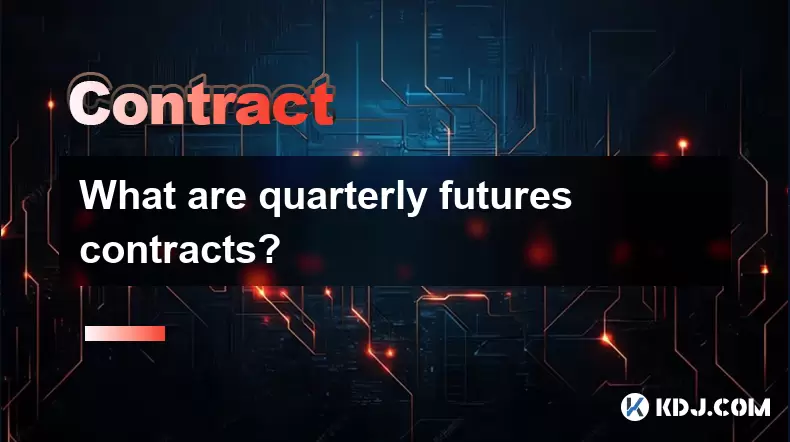-
 Bitcoin
Bitcoin $118600
0.36% -
 Ethereum
Ethereum $3855
1.06% -
 XRP
XRP $3.195
-0.09% -
 Tether USDt
Tether USDt $1.000
-0.04% -
 BNB
BNB $844.5
6.23% -
 Solana
Solana $191.3
2.83% -
 USDC
USDC $0.9997
-0.01% -
 Dogecoin
Dogecoin $0.2376
0.10% -
 TRON
TRON $0.3242
0.83% -
 Cardano
Cardano $0.8222
0.13% -
 Hyperliquid
Hyperliquid $45.26
6.53% -
 Sui
Sui $4.200
-2.56% -
 Stellar
Stellar $0.4336
-1.24% -
 Chainlink
Chainlink $18.86
0.28% -
 Hedera
Hedera $0.2796
-1.75% -
 Bitcoin Cash
Bitcoin Cash $583.3
-1.84% -
 Avalanche
Avalanche $27.06
8.09% -
 Litecoin
Litecoin $112.3
-1.16% -
 Toncoin
Toncoin $3.353
0.58% -
 UNUS SED LEO
UNUS SED LEO $8.968
-0.11% -
 Shiba Inu
Shiba Inu $0.00001395
-0.54% -
 Ethena USDe
Ethena USDe $1.001
-0.03% -
 Uniswap
Uniswap $10.76
0.69% -
 Polkadot
Polkadot $4.175
0.26% -
 Monero
Monero $326.7
1.07% -
 Bitget Token
Bitget Token $4.665
1.61% -
 Dai
Dai $0.9998
-0.02% -
 Pepe
Pepe $0.00001271
0.32% -
 Cronos
Cronos $0.1416
2.01% -
 Aave
Aave $299.3
1.15%
What are quarterly futures contracts?
Quarterly futures contracts expire on set dates (March, June, Sept, Dec), offering structured trading for hedging or speculation—ideal for crypto traders seeking defined timelines. (154 characters)
Jul 28, 2025 at 06:22 am

Understanding Quarterly Futures Contracts
Quarterly futures contracts are standardized agreements to buy or sell an asset—such as a cryptocurrency—at a predetermined price at a specific date that aligns with the end of a calendar quarter. These quarters typically end in March, June, September, and December. Unlike perpetual contracts that have no expiration date, quarterly futures have a fixed maturity, which makes them suitable for traders seeking defined timeframes for hedging or speculation.
These contracts are widely used in crypto derivatives markets, especially on platforms like Binance, Bybit, and OKX. The fixed expiry forces traders to plan their strategies around the settlement date, influencing both risk management and position sizing.
How Do Quarterly Futures Contracts Work?
When you enter a quarterly futures contract, you're agreeing to settle the position on the contract's expiration date. Settlement can be either in cash (most common in crypto) or in the underlying asset. For example, if you hold a BTCUSD quarterly futures contract expiring in March, you must close or roll over your position before the settlement time—or let the exchange handle it automatically based on the final settlement price.
Key mechanics:
- Each contract represents a fixed amount of the underlying asset (e.g., 0.001 BTC per contract).
- Leverage is available, allowing traders to control large positions with less capital.
- Mark-to-market accounting happens daily to reflect unrealized gains or losses.
Traders must monitor the funding rate before expiry if they’re holding positions close to the rollover date—even though quarterly contracts don’t have continuous funding like perpetual swaps.
Step-by-Step: How to Trade a Quarterly Futures Contract
To trade a quarterly futures contract effectively, follow these steps precisely:
- Navigate to the futures section of your chosen exchange (e.g., Binance Futures).
- Select the quarterly contract from the dropdown menu—look for symbols like BTCUSDM24 for June 2024 expiry.
- Choose your position type: long (betting price will rise) or short (betting price will fall).
- Set your leverage using the slider or input field—common options range from 1x to 125x depending on risk tolerance.
- Input your order size in contracts or USD value.
- Confirm the order by clicking “Buy/Long” or “Sell/Short.”
Always double-check the contract expiry date displayed prominently in the interface. A common mistake is confusing quarterly with perpetual or bi-weekly contracts, which can lead to unintended exposure.
Differences Between Quarterly and Perpetual Futures
While both instruments allow leveraged trading, their structures differ significantly:
- Expiry: Quarterly contracts expire; perpetuals do not.
- Funding Fees: Perpetuals charge or pay funding every 8 hours to keep price aligned with spot; quarterly contracts do not have recurring funding.
- Settlement: Quarterly contracts settle once at expiry using a time-weighted average price (TWAP); perpetuals remain open until manually closed.
- Use Case: Traders use quarterly contracts for strategic positioning around events like halvings or earnings; perpetuals suit day traders or those wanting continuous exposure.
The absence of funding fees in quarterly contracts can be a cost advantage for longer-term holds, but it also means the contract may trade at a larger premium or discount to spot as expiry nears.
Risks and Considerations When Trading Quarterly Futures
Trading quarterly futures introduces specific risks beyond standard market volatility:
- Roll Risk: If you want to maintain exposure past expiry, you must manually or automatically roll to the next quarterly contract. This can result in slippage or unfavorable pricing.
- Leverage Risk: High leverage magnifies both gains and losses. A 5% adverse move with 20x leverage wipes out 100% of your margin.
- Liquidity Risk: Older quarterly contracts may have lower liquidity as expiry approaches, making it harder to exit at desired prices.
- Settlement Risk: If your position is not closed, the exchange will settle it automatically. Ensure your account has sufficient margin to avoid liquidation during this process.
Always use stop-loss orders and avoid holding positions with borrowed funds unless you fully understand the liquidation mechanics of your chosen platform.
Frequently Asked Questions
Q: Can I close a quarterly futures contract before it expires?
Yes, you can close your position at any time before the settlement date by placing an offsetting trade—sell if you’re long, or buy if you’re short. Most traders exit before expiry to avoid settlement complications.
Q: What happens if I don’t close my quarterly futures contract by expiry?
The exchange will automatically settle the position using the final settlement price, typically a TWAP of the underlying asset over the last hour. Any profit or loss will be reflected in your account balance.
Q: Are quarterly futures contracts available for all cryptocurrencies?
No. Only major assets like BTC, ETH, SOL, and BNB typically have active quarterly futures markets. Lesser-known tokens may only offer perpetual or no futures at all.
Q: How do I know which quarterly contract I’m trading?
Check the contract symbol—most exchanges use a format like ASSETYYMM. For example, ETHUSDH25 refers to an Ether quarterly contract expiring in March 2025 (H = March in some exchanges’ coding). Always verify the expiry date shown in the trading interface.
Disclaimer:info@kdj.com
The information provided is not trading advice. kdj.com does not assume any responsibility for any investments made based on the information provided in this article. Cryptocurrencies are highly volatile and it is highly recommended that you invest with caution after thorough research!
If you believe that the content used on this website infringes your copyright, please contact us immediately (info@kdj.com) and we will delete it promptly.
- Bitcoin, Fiat Devaluation, and Hedging: A New Yorker's Take
- 2025-07-28 22:50:12
- Trump Media, Bitcoin, and Options: A High-Stakes Gamble?
- 2025-07-28 23:10:13
- Elon Musk, SpaceX, and Bitcoin: A $153 Million Mystery
- 2025-07-28 22:30:12
- Pepe, Price Prediction, and Dogecoin: What's Next for Meme Coins?
- 2025-07-28 23:15:12
- Crypto, VCs, and Infrastructure: Building the Future, Not Just Betting on Memes
- 2025-07-28 22:50:12
- Ozak AI: Is This Crypto Gem Primed for a 2025 Takeoff?
- 2025-07-28 22:30:12
Related knowledge

Why is my Bitstamp futures position being liquidated?
Jul 23,2025 at 11:08am
Understanding Futures Liquidation on BitstampFutures trading on Bitstamp involves borrowing funds to open leveraged positions, which amplifies both po...

Does Bitstamp offer inverse contracts?
Jul 23,2025 at 01:28pm
Understanding Inverse Contracts in Cryptocurrency TradingIn the realm of cryptocurrency derivatives, inverse contracts are a specific type of futures ...

What is the difference between futures and perpetuals on Bitstamp?
Jul 27,2025 at 05:08am
Understanding Futures Contracts on BitstampFutures contracts on Bitstamp are financial derivatives that allow traders to speculate on the future price...

How to find your Bitstamp futures trade history?
Jul 23,2025 at 08:07am
Understanding Bitstamp and Futures Trading AvailabilityAs of the current state of Bitstamp’s service offerings, it is critical to clarify that Bitstam...

Can I use a trailing stop on Bitstamp futures?
Jul 23,2025 at 01:42pm
Understanding Trailing Stops in Cryptocurrency TradingA trailing stop is a dynamic type of stop-loss order that adjusts automatically as the price of ...

Can I use a trailing stop on Bitstamp futures?
Jul 25,2025 at 02:28am
Understanding Trailing Stops in Cryptocurrency Futures TradingA trailing stop is a dynamic type of stop-loss order that adjusts automatically as the m...

Why is my Bitstamp futures position being liquidated?
Jul 23,2025 at 11:08am
Understanding Futures Liquidation on BitstampFutures trading on Bitstamp involves borrowing funds to open leveraged positions, which amplifies both po...

Does Bitstamp offer inverse contracts?
Jul 23,2025 at 01:28pm
Understanding Inverse Contracts in Cryptocurrency TradingIn the realm of cryptocurrency derivatives, inverse contracts are a specific type of futures ...

What is the difference between futures and perpetuals on Bitstamp?
Jul 27,2025 at 05:08am
Understanding Futures Contracts on BitstampFutures contracts on Bitstamp are financial derivatives that allow traders to speculate on the future price...

How to find your Bitstamp futures trade history?
Jul 23,2025 at 08:07am
Understanding Bitstamp and Futures Trading AvailabilityAs of the current state of Bitstamp’s service offerings, it is critical to clarify that Bitstam...

Can I use a trailing stop on Bitstamp futures?
Jul 23,2025 at 01:42pm
Understanding Trailing Stops in Cryptocurrency TradingA trailing stop is a dynamic type of stop-loss order that adjusts automatically as the price of ...

Can I use a trailing stop on Bitstamp futures?
Jul 25,2025 at 02:28am
Understanding Trailing Stops in Cryptocurrency Futures TradingA trailing stop is a dynamic type of stop-loss order that adjusts automatically as the m...
See all articles

























































































